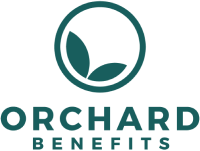Universal healthcare in Canada recently reached a major milestone by including dental care in the federally funded public healthcare system. This decision reflects the shared value of good oral health care as part of the complete well-being of Canadians.
In Canada’s Federal Budget 2023 statement, the government confirmed that the new Canadian Dental Care Plan (CDCP) will benefit up to nine million Canadians and ensure that no one has to choose between taking care of their health and paying the bills at the end of the month.
CDCP Details & Eligibility
The CDCP rollout has begun with an interim Canada Dental Benefit to provide parents or guardians with direct, tax-free payments to cover dental expenses for children under 12. The CDCP will be available to Canadians with annual family incomes of less than $90,000 in the long term. Eligible families with incomes less than $70,000 will be exempt from co-pays. Canadians with dental coverage through employee benefits or private insurance will not be eligible for CDCP.
New Tax Reporting Obligation
Because the CDCP will only be available to uninsured Canadians, a new tax reporting obligation for employers will take effect in the 2023 tax year to identify those with unmet oral health care needs. Employers will be required to report on T4/T4As whether dental insurance or coverage of any kind (such as a Health Spending Account) was available on December 31 of the reporting tax year for:
- Employees
- Employees’ spouses and/or dependents
- Former employees
- Spouses of deceased employees
New Tax Slip Boxes
The new reporting obligation will continue to be required annually, with new tax slip boxes for employers to fill out.
- Box 45 (T4): Employer Offered Dental Benefits. (This new box will be mandatory)
- Box 015 (T4A): Payer Offered Dental Benefits. (This new box will be mandatory if you report in Box 016, Pension or Superannuation. This box will otherwise be optional)
To complete the tax slip, employers must choose the appropriate code based on whether dental coverage was available to the plan member, not whether the plan member has chosen to participate in the coverage. In other words, if a plan member waived coverage or declined to participate in the benefits plan, they would still have access to coverage.
Employers Will Choose From the Following Code System:
- CODE 1: The plan member has no access to dental insurance or dental coverage of any kind.
- CODE 2: Only the plan member has access to dental insurance or dental coverage of any kind.
- CODE 3: The plan member, their spouse, and their dependents have access to dental insurance or dental coverage of any kind.
- CODE 4: Only the plan member and their spouse have access to dental insurance or dental coverage of any kind.
- CODE 5: Only the plan member and their dependents have access to dental insurance or dental coverage of any kind.
Preventing Barriers to Care
While support and enthusiasm for the new national Dental Care Plan have been high across the country, the Canadian Life and Health Insurance Association highlighted the importance that “any new initiatives do not disrupt access to dental care for the majority of Canadians who already have coverage through employer-provided health benefits.” Insurers paid out over $9 billion in dental care expenses in 2021, reflecting the high-value Canadians place on their existing coverage. Some providers have hesitated to confirm adjustments to dental coverage offerings as the government continues to provide incremental updates on details of the CDCP. With employer-provided benefits providing coverage that generally exceeds public plans, it’s safe to say that Canadians would not want their existing coverage negatively impacted due to the CDCP.
Keep a close eye on the Orchard Benefits Blog as we continue to follow the development of Canada’s new Dental Plan.






 Toronto, ON, Canada
Toronto, ON, Canada




